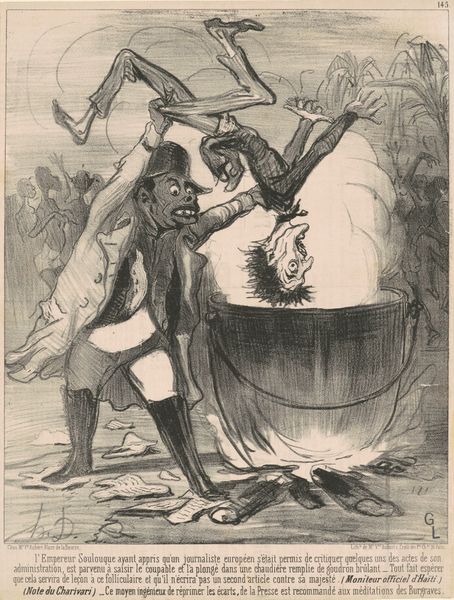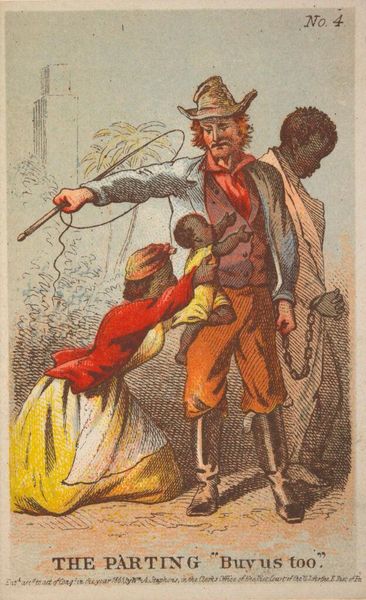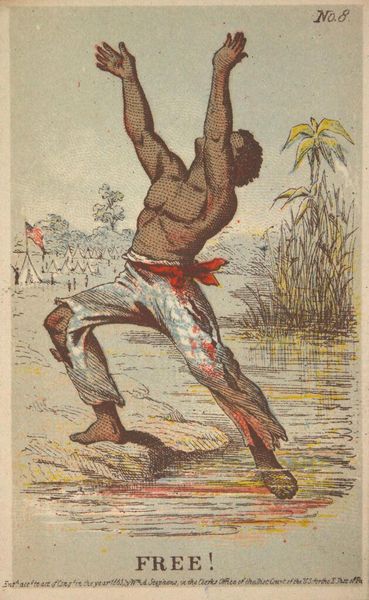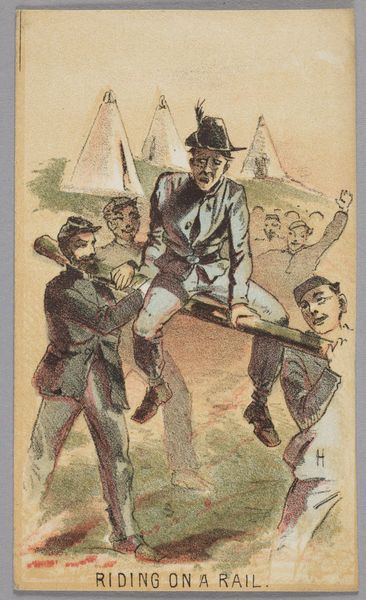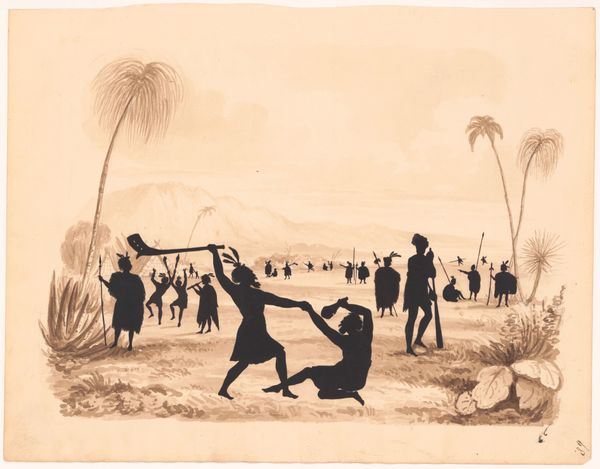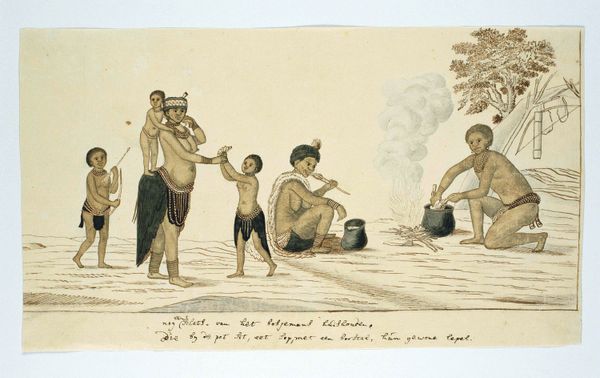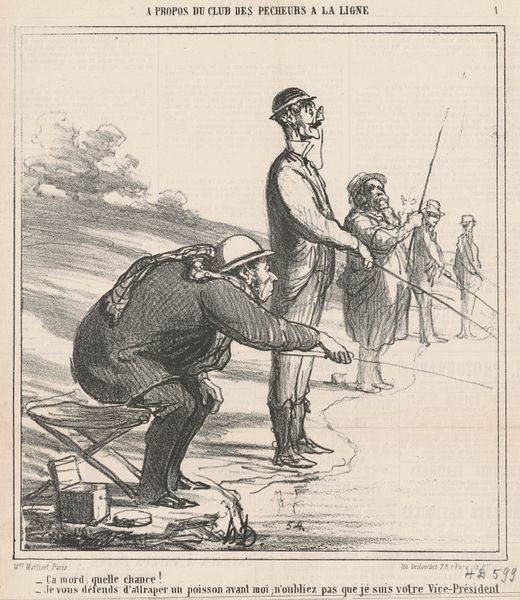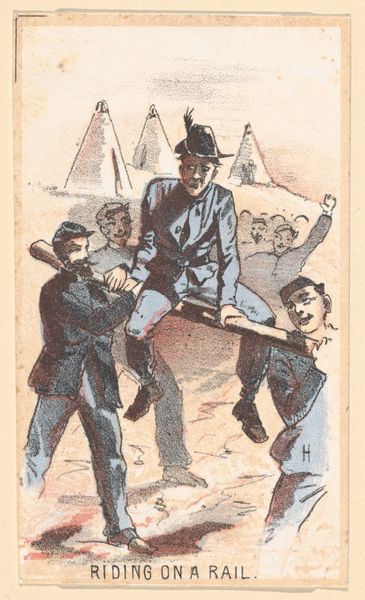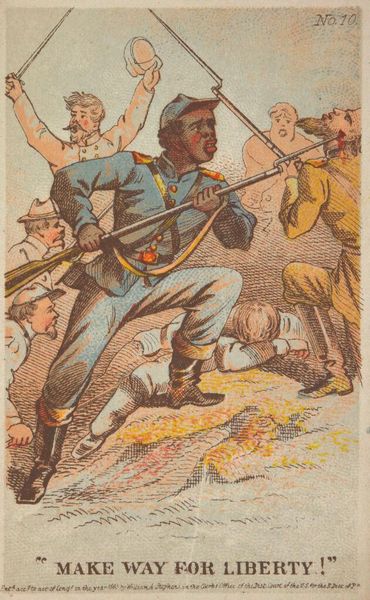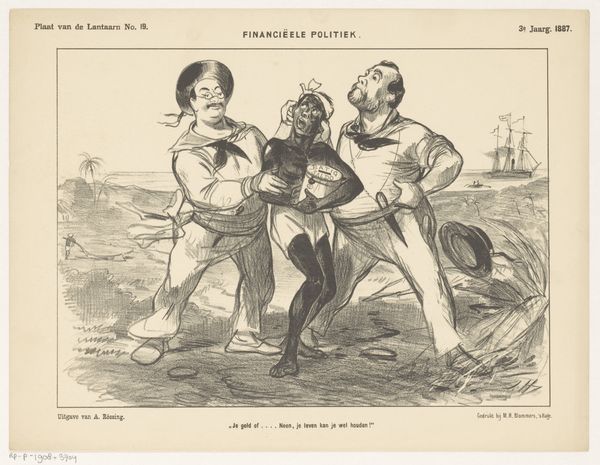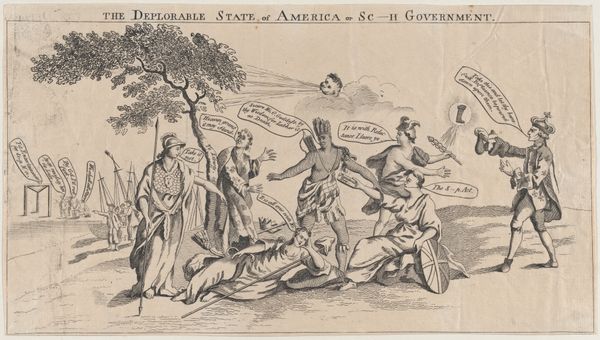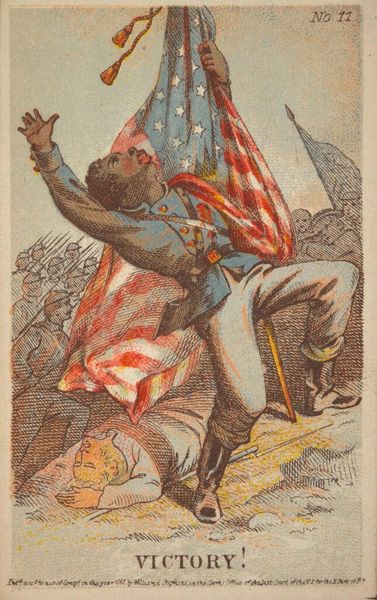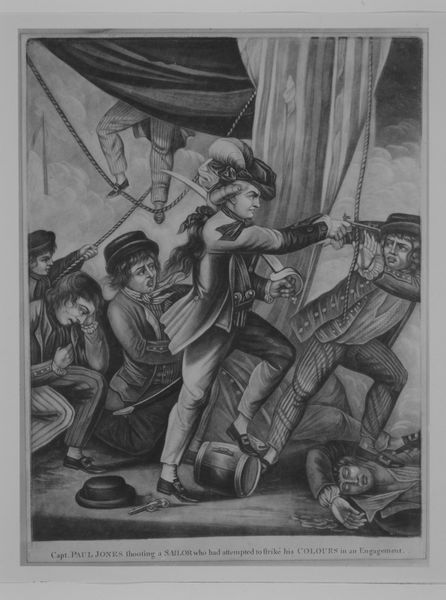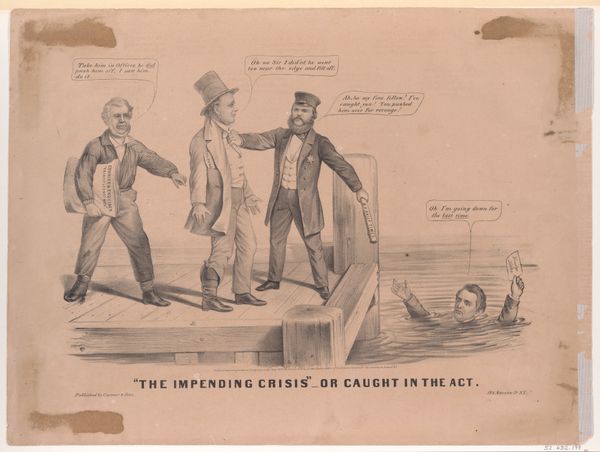
lithograph, print
#
portrait
#
narrative-art
#
lithograph
# print
#
charcoal drawing
#
pencil drawing
#
portrait drawing
#
history-painting
#
realism
Copyright: Public domain
Editor: Here we have "Freedom to the Slaves," a lithograph print attributed to Currier and Ives. There isn't a specific date associated with it, but judging by the inscription, it clearly references the Emancipation Proclamation. The composition feels… well, overtly symbolic, almost staged. What layers do you see beneath the surface of this piece? Curator: Ah, yes, overtly symbolic! It’s a visual rhetoric deeply embedded in its time. Lincoln, towering almost Christ-like, hand raised in a gesture echoing divine sanction. It’s designed to evoke powerful feelings. The broken chains are the obvious emblem, but consider where the supplicant's gaze leads… beyond Lincoln, beyond even implied salvation. What does that upward glance tell us? Editor: Maybe it’s aspiration? Or perhaps it speaks to the idea that true freedom comes from something greater than just a political act. The family group also reinforces that message. Curator: Precisely. The figures aren't simply freed individuals, but archetypes embodying hope for future generations. They become emblems of rebirth, resilience, and the continuation of cultural memory. This isn't just about the past, but the ongoing struggle to define, protect, and transmit cultural heritage. Are these symbols that are culturally resonant for everyone or just a specific segment of society? Editor: That’s a really important question, isn’t it? I guess the symbolism of Lincoln as a savior might not resonate the same way today, given everything we know about the complexities of that era. Curator: Indeed. Time shifts the weight of imagery, adding layers of understanding but perhaps eroding original intent. Recognizing the shifting symbolic ground allows for a more nuanced conversation. Thank you, these conversations encourage us to think more deeply about art, the power of symbols, and our reactions as well. Editor: I agree; this definitely broadened my perspective on interpreting historical narratives within art.
Comments
No comments
Be the first to comment and join the conversation on the ultimate creative platform.
